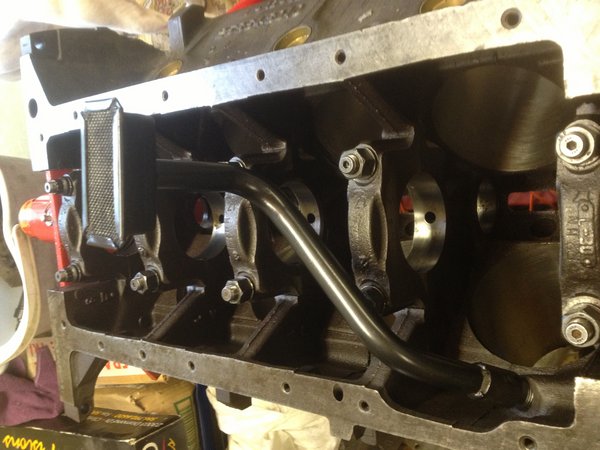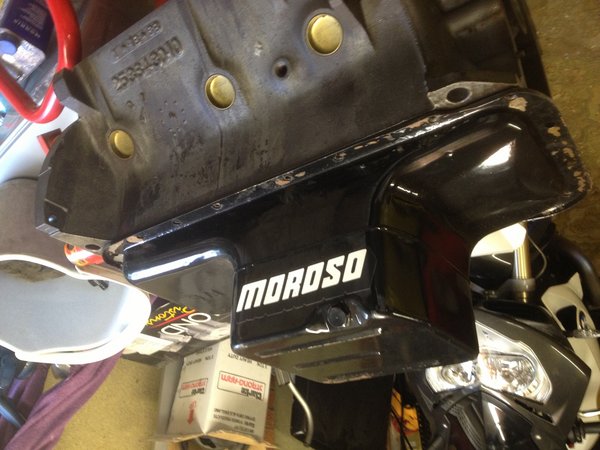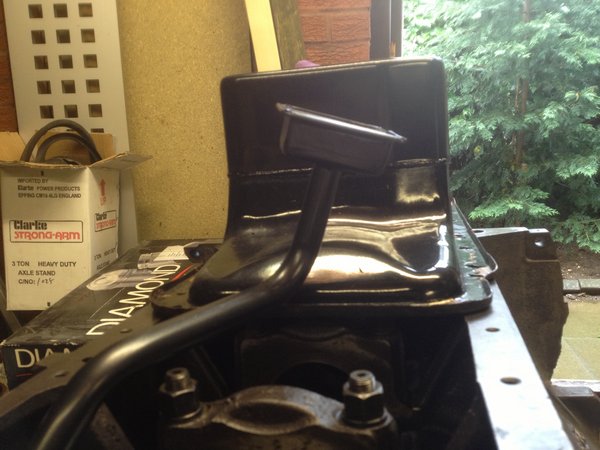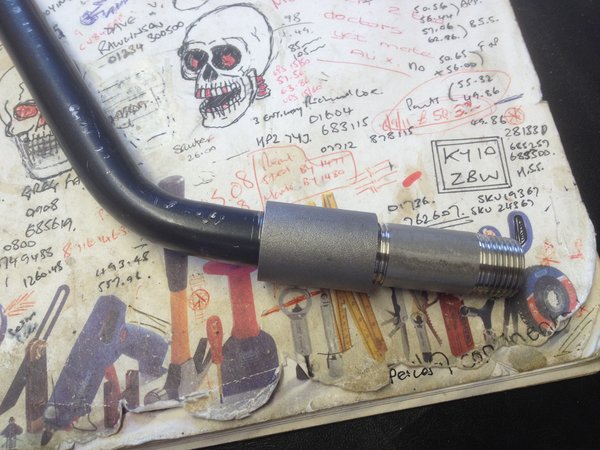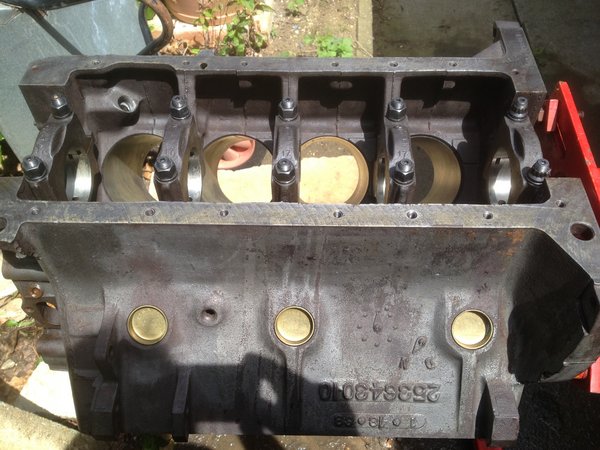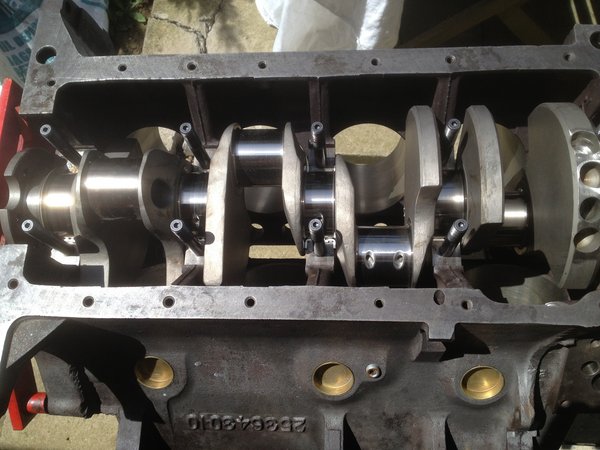Re: 500" stroked build
Only ever use runners that match the port flow and only use ports that flow as much as the engine needs. Otherwise you start loosing power from the bottom up as well as throttle response and mixture quality.
More is not always best.
More is not always best.
The Dave giveth and the Dave taketh away.
-
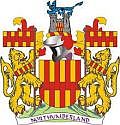
dave-r - Grumpy Old Man
- Posts: 9842
- Joined: 12 Oct 2003 21:45
- Location: North of the Tyne, England
Re: 500" stroked build
I'm with you there Dave, it's quite easy for me to get caught up in thinking too big when it comes to matching components 
I read up on the Indy manifolds, some pretty impressive power can be made from using them.
I need to measure the big end journal dia, crank throw and rod length and work out the actual displacement of the motor, I only know its around 500" but I'm not dead certain.
With a big cam and a lot of cubes these motors can really swallow it up.
I'd seriously consider a fuel injection system for this engine, I reckon it will be worth keeping so I ought to make it so usable I want to keep it!
I'd still like to put a Sixpack assy together for the Chally, they just look so cool and they do produce the results............ always wanted one of em just like I always wanted a pistol grip shifted 4 speed, it's just Mopar heaven as far as I'm concerned
I read up on the Indy manifolds, some pretty impressive power can be made from using them.
I need to measure the big end journal dia, crank throw and rod length and work out the actual displacement of the motor, I only know its around 500" but I'm not dead certain.
With a big cam and a lot of cubes these motors can really swallow it up.
I'd seriously consider a fuel injection system for this engine, I reckon it will be worth keeping so I ought to make it so usable I want to keep it!
I'd still like to put a Sixpack assy together for the Chally, they just look so cool and they do produce the results............ always wanted one of em just like I always wanted a pistol grip shifted 4 speed, it's just Mopar heaven as far as I'm concerned

Jesus built my hot rod
-

Adrian Worman - Frequent Poster
- Posts: 2051
- Joined: 10 Mar 2007 23:54
- Location: milton keynes
Re: 500" stroked build
I got a PGS for my chally they are the dogs Ade. I also picked up a six intake manifold for a 383, I may bolt it on some day if I can manage it.  I almost picked up a six pack set up a year or two back but I was rumbled by another, Dave will remember that.
I almost picked up a six pack set up a year or two back but I was rumbled by another, Dave will remember that. 
I seek the knowledge of MOPAR
-
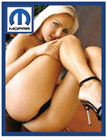
RedRaven - Frequent Poster
- Posts: 1995
- Joined: 15 Jul 2007 20:09
- Location: THE DOG HOUSE
- fal308
- Frequent Poster
- Posts: 981
- Joined: 01 Jan 2004 13:57
- Location: Pacific MO
Re: 500" stroked build
Hi Adrian,
I just fired up my new engine it is a 505 stroker on a 440 block and i use the 6-Pack carbs that is a bit hard to tune on this engine but im getting there and it´s a 4 speed Challenger !
it is a 505 stroker on a 440 block and i use the 6-Pack carbs that is a bit hard to tune on this engine but im getting there and it´s a 4 speed Challenger !
I just fired up my new engine
-

Pat - Frequent Poster
- Posts: 210
- Joined: 10 Dec 2011 22:24
- Location: Were my car is parkt
Re: 500" stroked build
You'd better spill the beans Par, we wanna know ALL the details 
Jesus built my hot rod
-

Adrian Worman - Frequent Poster
- Posts: 2051
- Joined: 10 Mar 2007 23:54
- Location: milton keynes
Re: 500" stroked build
Pat wrote:Hi Adrian,
I just fired up my new engineit is a 505 stroker on a 440 block and i use the 6-Pack carbs that is a bit hard to tune on this engine but im getting there and it´s a 4 speed Challenger !
Get a Quick Fuel or Pro-Max Metering Block which accept Holley jets, and get a Wide Band Oxygen Sensor in the Exhaust stream and this will make tuning a breeze! You can tune the idle, cruise circuit and WOT very effectively. I also use 20 initial, 14 mechanical, 12 for vacum advance and use Manifold vacum, not ported vacum.(Don@FBO distributor). You gotta get the timing right 1ST! ( I heeded Dave R. advice on this one)
-

Eddie - Frequent Poster
- Posts: 6212
- Joined: 16 Oct 2006 21:26
- Location: Terre Haute, Ind.
Re: 500" stroked build
I just tuned a stock spec 440+6 for a mate. It took 20 initial 34 total on the timing. Fitted a 9.5 power valve. The rest I just followed the drill and jet sizes as per Mopar Performance and Pro Max recommendations that are in the tuning guides posted on this message board. Seemed to work well. Centre carb was tuned for max RPM in gear (this was an Automatic). Two pumps of the gas pedal and one turn of the key fires it up from cold. When warm no need to touch the throttle at all. One click from the ignition switch and she goes straight into idle.
The Dave giveth and the Dave taketh away.
-

dave-r - Grumpy Old Man
- Posts: 9842
- Joined: 12 Oct 2003 21:45
- Location: North of the Tyne, England
-

Adrian Worman - Frequent Poster
- Posts: 2051
- Joined: 10 Mar 2007 23:54
- Location: milton keynes
Re: 500" stroked build
Yeah.
My own 440 with the Hughes solid cam I ended up with 25 initial and 35 total.
My own 440 with the Hughes solid cam I ended up with 25 initial and 35 total.
The Dave giveth and the Dave taketh away.
-

dave-r - Grumpy Old Man
- Posts: 9842
- Joined: 12 Oct 2003 21:45
- Location: North of the Tyne, England
Re: 500" stroked build
I can tell you that to tune the 6-Pack carbs on a stroker is not like a 440 engine not even close ! For one it whants more air on idel on the outboards and that go for the fuel to  I can tell you that it is a nasty best
I can tell you that it is a nasty best  I will get back for more details when im ready and maybe som pic to of it if you like Adrian ?
I will get back for more details when im ready and maybe som pic to of it if you like Adrian ?
-

Pat - Frequent Poster
- Posts: 210
- Joined: 10 Dec 2011 22:24
- Location: Were my car is parkt
Re: 500" stroked build
Pat wrote:I can tell you that to tune the 6-Pack carbs on a stroker is not like a 440 engine not even close ! For one it whants more air on idel on the outboards and that go for the fuel toI can tell you that it is a nasty best
I will get back for more details when im ready and maybe som pic to of it if you like Adrian ?
You don't need to have a stroker for those same air demands. Big camshafts all need a lot more air and fuel at idle just the same. It took me ages to get the right ballance of air bleed on the centre carb and holes drilled in all the throttle blades. Mine was made worse as my outer carbs were from a mid-70s Jensen and didn't have idle mixture screws at all.
I did find that using a metering block from a 850 DP carb helped a lot but i still had to open up air and fuel restrictions in the block.
The Dave giveth and the Dave taketh away.
-

dave-r - Grumpy Old Man
- Posts: 9842
- Joined: 12 Oct 2003 21:45
- Location: North of the Tyne, England
Re: 500" stroked build
dave-r wrote:Pat wrote:I can tell you that to tune the 6-Pack carbs on a stroker is not like a 440 engine not even close ! For one it whants more air on idel on the outboards and that go for the fuel toI can tell you that it is a nasty best
I will get back for more details when im ready and maybe som pic to of it if you like Adrian ?
You don't need to have a stroker for those same air demands. Big camshafts all need a lot more air and fuel at idle just the same. It took me ages to get the right ballance of air bleed on the centre carb and holes drilled in all the throttle blades. Mine was made worse as my outer carbs were from a mid-70s Jensen and didn't have idle mixture screws at all.
I did find that using a metering block from a 850 DP carb helped a lot but i still had to open up air and fuel restrictions in the block.
I gues you have more experience then ! Jolly good work
-

Pat - Frequent Poster
- Posts: 210
- Joined: 10 Dec 2011 22:24
- Location: Were my car is parkt
Re: 500" stroked build
Pat wrote:I gues you have more experience then !
I did by the time I had finished that.
The Dave giveth and the Dave taketh away.
-

dave-r - Grumpy Old Man
- Posts: 9842
- Joined: 12 Oct 2003 21:45
- Location: North of the Tyne, England
Re: 500" stroked build
Hey Adrian !
Here is a pic of the on going work im doing and have done so far on the stroker for you. The engine is built by me and consit of a stroker kit from 440 Source but i do no have so mutch experience as some of the experts on this forum toe i had some good teather from the past that builds race track car engine´s and an old dragracing fox that is a wisard on head porting but al except for the porting of the head´s is done by me alone and to be honest it would be a shame if i couldent do that when i could work on Top Fuel engines for a European team for 2 years that ended up only 3 place in the European Shampionship bouth years..... Now back to the engine that is a 440 block that is a 030 bore and results in about 506 heads are Edelbrock rpm 84cc that is ported as good as it can be done in those heads cam is a roller hydralic from Hughes and the resutls of the engine they build that im copying apart from the heads that they used that is Indy 76cc can be seen by this link http://www.hughesengines.com/TechArticl ... 012007.php
Hope you have as fun as me soone
Here is a pic of the on going work im doing and have done so far on the stroker for you. The engine is built by me and consit of a stroker kit from 440 Source but i do no have so mutch experience as some of the experts on this forum toe i had some good teather from the past that builds race track car engine´s and an old dragracing fox that is a wisard on head porting but al except for the porting of the head´s is done by me alone and to be honest it would be a shame if i couldent do that when i could work on Top Fuel engines for a European team for 2 years that ended up only 3 place in the European Shampionship bouth years..... Now back to the engine that is a 440 block that is a 030 bore and results in about 506 heads are Edelbrock rpm 84cc that is ported as good as it can be done in those heads cam is a roller hydralic from Hughes and the resutls of the engine they build that im copying apart from the heads that they used that is Indy 76cc can be seen by this link http://www.hughesengines.com/TechArticl ... 012007.php
Hope you have as fun as me soone
-

Pat - Frequent Poster
- Posts: 210
- Joined: 10 Dec 2011 22:24
- Location: Were my car is parkt
Re: 500" stroked build
I just laid my hands on this C&S carb that I plan on using on this engine, its a 900cfm mechanical Aerosol model that a member of the MMA over here used with a lot of succes on a hot 440 he ran on the street.
Here's a couple of piccies
Here's a couple of piccies
Jesus built my hot rod
-

Adrian Worman - Frequent Poster
- Posts: 2051
- Joined: 10 Mar 2007 23:54
- Location: milton keynes
Re: 500" stroked build
The lack of boosters worries me Ade. Although it looks to be a great mover of air with little restriction. Are there replaceable Idle air bleeds, high speed bleeds? Does it have a powervalve or blockoff plate and big jets? It might be finicky to tune for low speed idle, hope not. Nice find for the money!!! 

-

Eddie - Frequent Poster
- Posts: 6212
- Joined: 16 Oct 2006 21:26
- Location: Terre Haute, Ind.
Re: 500" stroked build
Agreed it does look very different, there are no amplifiers on the boosters.
I done some research on a few forums, Moparts had some interesting posts that explained a lot but all repirts were positive tho.
I'm gonna drop it onto the 440 in the Chally on top of a Performer RPM first and see if it behaves like a street carb. I'm assured it does but I would like a crack at it to see how it pans out
I done some research on a few forums, Moparts had some interesting posts that explained a lot but all repirts were positive tho.
I'm gonna drop it onto the 440 in the Chally on top of a Performer RPM first and see if it behaves like a street carb. I'm assured it does but I would like a crack at it to see how it pans out
Jesus built my hot rod
-

Adrian Worman - Frequent Poster
- Posts: 2051
- Joined: 10 Mar 2007 23:54
- Location: milton keynes
Re: 500" stroked build
It shore looks like it is made for a nasty race engine Adrian ! My first consirn would be that the secondary throttel blades dont have any airbleeds so my gues is that you will have a very ritch (fat) mixure on idel if you are abel to have an idel around 900 rpm but i hope im wrong  Holley made a carb that they named AD if i remember coretly that whas a dubbel pumper for hotter street engines that workt great out of the box that maybe could be a good one !? But if you are building a pure race engine for the drag strip it might be a good carb still.
Holley made a carb that they named AD if i remember coretly that whas a dubbel pumper for hotter street engines that workt great out of the box that maybe could be a good one !? But if you are building a pure race engine for the drag strip it might be a good carb still.
-

Pat - Frequent Poster
- Posts: 210
- Joined: 10 Dec 2011 22:24
- Location: Were my car is parkt
Re: 500" stroked build
Back on it..........
Got a couple of concerns with the 1/2"" pickup tube tho.
I drilled and tapped it a lil while back but when I trial fitted the pipe this mornin I couldn't get it to sit how I wanted. Look at the pics, it sits square but its pretty much touching the side of the sump, if I back it round a bit it clears but is well pissed. The sump is proper deep so I guess it won't be a prob, am I worrying about nothing or should I just bend the pick up so the end sits square?
I expected to have the pick maybe and inch or so from the bottom of the pan
Got a couple of concerns with the 1/2"" pickup tube tho.
I drilled and tapped it a lil while back but when I trial fitted the pipe this mornin I couldn't get it to sit how I wanted. Look at the pics, it sits square but its pretty much touching the side of the sump, if I back it round a bit it clears but is well pissed. The sump is proper deep so I guess it won't be a prob, am I worrying about nothing or should I just bend the pick up so the end sits square?
I expected to have the pick maybe and inch or so from the bottom of the pan
Jesus built my hot rod
-

Adrian Worman - Frequent Poster
- Posts: 2051
- Joined: 10 Mar 2007 23:54
- Location: milton keynes
Re: 500" stroked build
I had the exact problem with my 1/2" pickup tube Ade,although not as bad an angle as yours. If you leave it like that, the highest point or edge will be your clearance to the bottom of the sump. Since it's a deep sump I don't think it will cause a problem, BUT I've never ran one at that angle either! If it were mine I would attempt to carefully bend it but it may also crack bending it too much. I had to bend and modify one of my trap doors to clear the angle of my tube.(Die Grinder). Man the things we do for a Hi-Po oiling system 
-

Eddie - Frequent Poster
- Posts: 6212
- Joined: 16 Oct 2006 21:26
- Location: Terre Haute, Ind.
Re: 500" stroked build
Don't worry about it touching the side of the sump. The deeper into the sump you can get it the better. 1/4 inch from the bottom if possible.
The Dave giveth and the Dave taketh away.
-

dave-r - Grumpy Old Man
- Posts: 9842
- Joined: 12 Oct 2003 21:45
- Location: North of the Tyne, England
Re: 500" stroked build
Well the Moroso oil pick up isn't as sturdy as I thought, just tightening up with hand pressure to see how it settled got it to snap the end of thread off 
So, I got a threader out at work and screwed this steel socket and nipple onto the end, I have a locknut on the long nipple so I can set the head of the pick up where I want it, also slightly extended to get it closer to the oil pan floor
Fuckin rubbish materials, the steel tube was as weak as piss, I would be been well annoyed if I'd actually had to pay for that, probably 50 bucks or somethin
So, I got a threader out at work and screwed this steel socket and nipple onto the end, I have a locknut on the long nipple so I can set the head of the pick up where I want it, also slightly extended to get it closer to the oil pan floor
Fuckin rubbish materials, the steel tube was as weak as piss, I would be been well annoyed if I'd actually had to pay for that, probably 50 bucks or somethin

Jesus built my hot rod
-

Adrian Worman - Frequent Poster
- Posts: 2051
- Joined: 10 Mar 2007 23:54
- Location: milton keynes
Re: 500" stroked build
Nice going Ade! Just make sure to use some thread sealer. Don't want it sucking any air!
-

Eddie - Frequent Poster
- Posts: 6212
- Joined: 16 Oct 2006 21:26
- Location: Terre Haute, Ind.
Re: 500" stroked build
Trial fitted it Ed, I'm gonna make a longer nipple, maybe another half inch, its gets to about 1/2" from the pan one side of the pickup head and 1/4" the other....... I think that'll be fine 
Jesus built my hot rod
-

Adrian Worman - Frequent Poster
- Posts: 2051
- Joined: 10 Mar 2007 23:54
- Location: milton keynes
Re: 500" stroked build
Oh yeah,,that should be great Ade,,,nice work! I always believed that longer nipples are the best! 
-

Eddie - Frequent Poster
- Posts: 6212
- Joined: 16 Oct 2006 21:26
- Location: Terre Haute, Ind.
Re: 500" stroked build
Block washed in bucket loads if hot soapy water, shoved me block cleaning brushes up all its holes and dried off with an air gun and the sun 
Got all the swarf out from tapping and grinding the oil pick up and passage now, all threads chased and all waterways scrubbed and jetted.
Soon as its dry it'll get an oil wipe over the decks and lifter bores, cylinders wiped with oil and then maybe this afternoon I can drop in the crank to check clearances against the block
Got all the swarf out from tapping and grinding the oil pick up and passage now, all threads chased and all waterways scrubbed and jetted.
Soon as its dry it'll get an oil wipe over the decks and lifter bores, cylinders wiped with oil and then maybe this afternoon I can drop in the crank to check clearances against the block
Jesus built my hot rod
-

Adrian Worman - Frequent Poster
- Posts: 2051
- Joined: 10 Mar 2007 23:54
- Location: milton keynes
Re: 500" stroked build
IN!!!!!! Clear's s everything, just gonna clean off the oil from the bearings now and plastigauge them.
Jesus built my hot rod
-

Adrian Worman - Frequent Poster
- Posts: 2051
- Joined: 10 Mar 2007 23:54
- Location: milton keynes
Re: 500" stroked build
Fresh main studs installed and crank dropped on new bearings with plastigauge, measured .00015".
Weird, but the new stud set had two studs that were about 3/8" longer than the rest. The old set were all the same? I put em on no.3 for the time being, torqued down to 75lbs and span crank, perfect.
Good job the pick up broke cos it won't clear the weights now, have to extend it.
All oiled up and wrapped in a bin liner now and put to bed, excellent afternoons work in the hot sun, time for beer
Weird, but the new stud set had two studs that were about 3/8" longer than the rest. The old set were all the same? I put em on no.3 for the time being, torqued down to 75lbs and span crank, perfect.
Good job the pick up broke cos it won't clear the weights now, have to extend it.
All oiled up and wrapped in a bin liner now and put to bed, excellent afternoons work in the hot sun, time for beer
Jesus built my hot rod
-

Adrian Worman - Frequent Poster
- Posts: 2051
- Joined: 10 Mar 2007 23:54
- Location: milton keynes
Re: 500" stroked build
I'm sure you meant .0015 and not .00015 Ade.( 1.5 thousandths opposed to 1.5 ten thousands,,which would be impossible to read without a vernier scale or a digital probe) The bearings are THICKER 90 degrees from the PARTING LINE,,I'm also sure you measured the journal at 90 degrees from the parting line, this is where the clearance is smaller on all bearings. This is because the oil flow in a design like this causes the oil to form a hyrdo-wedge inside the bearing. .0015 is pretty tight,,for performance usage a minimum of .002 is preferred .0025 is ideal. Tight clearances cause the bearing to overheat..losing it's crush,,then it spins taking out the engine. I know you don't want to hear this but it has to be corrected. I measured .0025 on my stroker and specified that exact clearance to the Machinist doing my block work. I would re-measure the journals,,lightly oil the threads on the studs, install them finger tight, if on number 3,(thrust), pry the crank forward as you tighten the main cap. Also some studs may appear longer then others once installed,, this just means the block threads haven't been cut all the way. You can use a bottoming tap to cut deeper threads into the block if you wish, but it wont change anything as far as how the crank sits in the block or the torque settings. I would measure the threads depth with a simple wire gauge, then measure the wire with a vernier caliper. This will show how much thread engagement you actually have. Your thrust clearance should be .006 to .012 tighter is better but not any tighter than .004 Good Luck!
Last edited by Eddie on 30 Jun 2013 20:54, edited 2 times in total.
-

Eddie - Frequent Poster
- Posts: 6212
- Joined: 16 Oct 2006 21:26
- Location: Terre Haute, Ind.

